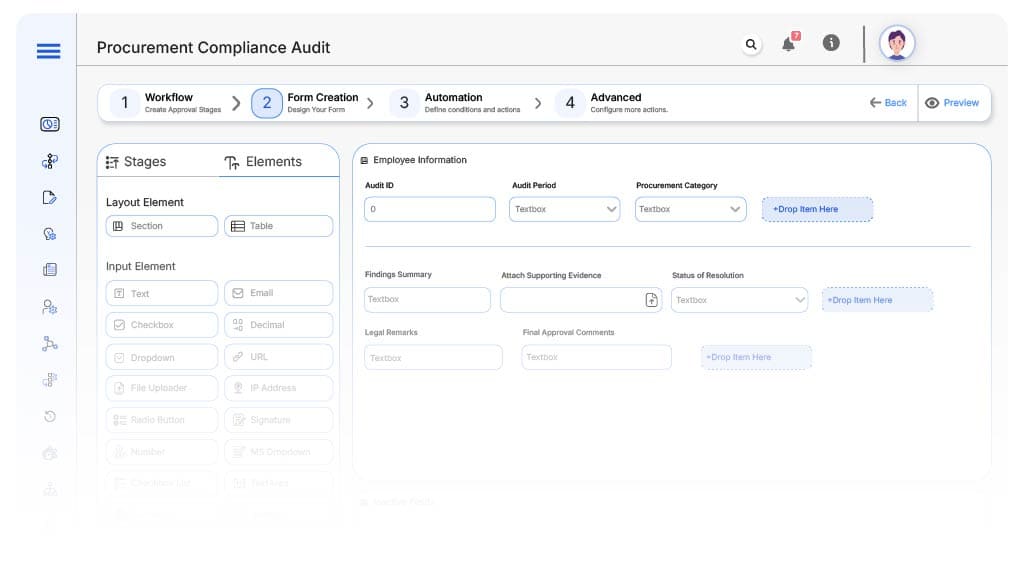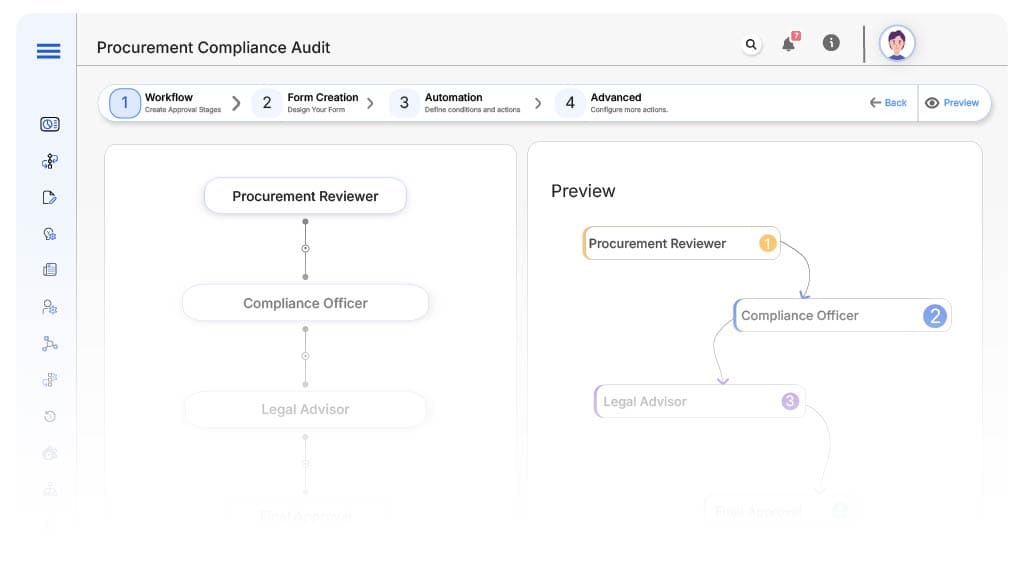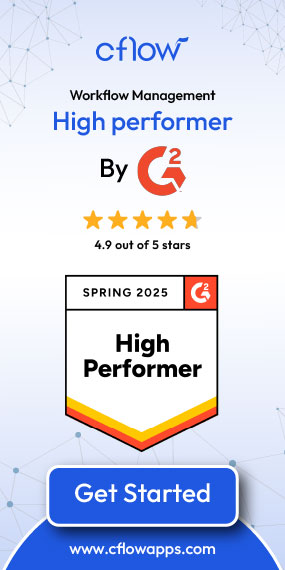- Cflow
- Procurement Compliance Audit Automation
Procurement Compliance Audit Automation

Clow Team

Procurement compliance audits ensure that purchasing practices align with internal policies, external regulations, and ethical standards. Manual audits using spreadsheets and emails often lead to overlooked transactions, missed deadlines, and inconsistent documentation. Industry reports reveal that 45% of procurement departments struggle with audit preparedness due to decentralized processes.
Without automation, sourcing, procurement, and compliance teams waste hours compiling data, verifying policy adherence, and managing audit timelines. This guide walks you through how Cflow automates the Procurement Compliance Audit Process, from data collection to final reporting.
What Is Procurement Compliance Audit Process?
The Procurement Compliance Audit Process evaluates whether procurement activities follow approved policies, supplier contracts, regulatory guidelines, and financial thresholds. It includes reviewing transactions, approvals, documentation, and vendor engagements.
This process ensures transparency, detects policy violations early, and supports risk mitigation. Automating the audit process increases efficiency, improves traceability, and reduces non-compliance risks. Research shows automated procurement audits reduce audit preparation time by 40% and improve findings accuracy.
Why Procurement Compliance Audit Matters for Organizations?
Risk Mitigation
Audit Readiness
Regulatory Compliance
Cost Recovery
Key Benefits of Automating Procurement Compliance Audit with Cflow
- Centralized Audit Trail Access: Cflow compiles procurement transactions, approvals, vendor records, and supporting documents into a centralized platform. This simplifies audit scope definition, evidence collection, and findings validation across departments.
- Automated Policy Checklists: Auditors use pre-configured compliance checklists that map to company procurement policies. Cflow flags missing fields, unapproved exceptions, or documentation gaps to ensure consistent evaluations.
- Real-Time Alerts & Escalations: Cflow sends automated reminders for pending audits or missing records. Escalation logic ensures auditors and procurement heads resolve discrepancies within audit timelines.
- Audit Review Workflows: Cflow routes audit findings to responsible stakeholders for review, remediation, and sign-off. It ensures accountability and promotes timely closure of compliance gaps.
- Dynamic Reporting & Dashboards: Auditors generate real-time dashboards on compliance status, open issues, resolved gaps, and audit history. These insights help leadership take proactive corrective actions.
Get the best value for money with Cflow
User Roles & Permissions
Internal Auditor (Initiator)
- Responsibilities: Launches audit cycle, uploads data sets, and begins compliance checks.
- Cflow Permission Level: Submit Form.
- Mapping: “Audit Team.”
Procurement Reviewer
- Responsibilities: Reviews flagged transactions and provides clarification or documentation.
- Cflow Permission Level: Approve/Reject.
- Mapping: “Procurement Group.”
Compliance Officer
- Responsibilities: Reviews high-risk issues and validates resolution.
- Cflow Permission Level: Approve/Reject.
- Mapping: “Compliance Group.”
Legal Advisor (Final Reviewer)
- Responsibilities: Approves audit completion, ensuring legal and regulatory alignment.
- Cflow Permission Level: Approve/Reject.
- Mapping: “Legal Team.”
Discover why teams choose Cflow
Form Design & Field Definitions

Field Label: Audit ID
- Type: Autonumber
- Auto-Populate Rules: Generated on submission.
Field Label: Audit Period
- Type: Date Range Picker
- Logic/Rules: Mandatory.
Field Label: Procurement Category
- Type: Dropdown (IT, Office Supplies, Consulting, Equipment, Services)
- Logic/Rules: Controls checklist selection.
Field Label: Findings Summary
- Type: Text Area
- Logic/Rules: Mandatory.
Field Label: Attach Supporting Evidence
- Type: File Upload
- Logic/Rules: Required for flagged issues.
Field Label: Status of Resolution
- Type: Dropdown (Resolved, In Progress, Escalated)
- Logic/Rules: Required for each finding.
Field Label: Legal Remarks
- Type: Text Area
- Logic/Rules: Required at final approval.
Transform your Workflow with AI fusion
Approval Flow & Routing Logic

Submission → Procurement Reviewer
- Status Name: Pending Procurement Review
- Notification Template: “New audit findings submitted. Please review and respond.”
- On Approve: Move to Compliance Officer.
- On Reject: Return to Auditor.
- Escalation: Notify Procurement Head after 2 days.
Procurement → Compliance Officer
- Status Name: Pending Compliance Validation
- Notification Template: “Please validate issue resolution and policy alignment.”
- On Approve: Move to Legal Advisor.
- On Reject: Return to Procurement.
- Escalation: Escalate to Compliance Manager.
Compliance → Legal Advisor
- Status Name: Pending Final Legal Review
- Notification Template: “Final legal sign-off needed for audit cycle completion.”
- On Approve: Mark as Audit Closed.
- On Reject: Return to Compliance.
- Escalation: Notify Legal Head.
Transform your AI-powered approvals
Implementation Steps in Cflow
Create a new workflow
Design the form
Assign User Roles/Groups
Design approval flow
Add notifications
Apply logic rules
Save and Publish
Test
Adjust
Go live
Example Journey: Office Supplies Audit
FAQ's
Unleash the full potential of your AI-powered Workflow

